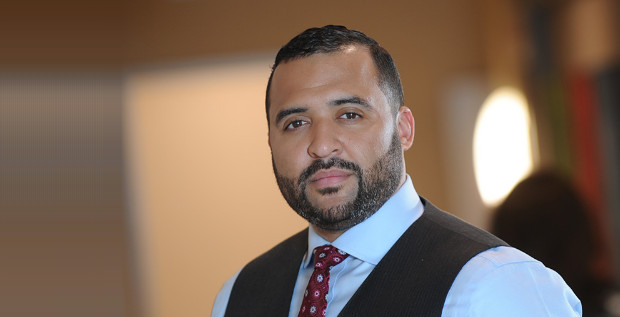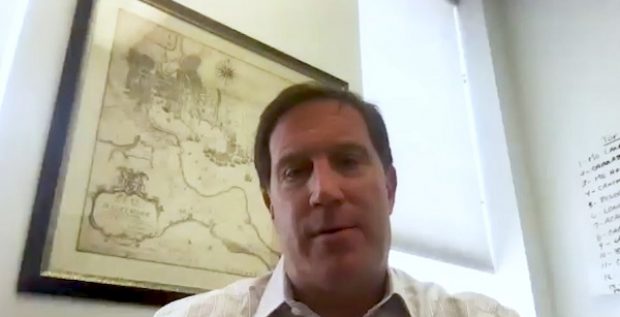Justin Kersey is the CEO (Chief Eats Organizer) of Baltimore Eats for Good. The organization is behind a city-wide fundraising effort this summer supporting dozens of Baltimore-area nonprofits. With more than 40 restaurants, businesses, and cultural venues signed on, the group aims to raise $1 million for local causes. Baltimore Eats for Good will be launching its campaign on July 28th.
How were you able to organize an effort of this scale?
JUSTIN KERSEY: We’re going to be using a piece of software that my team developed called Cake, and what Cake does is it facilitates digital cause marketing. It’s a way for businesses and nonprofits to create win-win partnerships
Tell us more about developing Cake.
The founding of Cake Cause Marketing really was my desire to become an entrepreneur but to have a social impact. It also stemmed from my interests in working independently and starting my own thing.
How did that lead to Baltimore Eats for Good?
Baltimore Eats for Good spun out of the company in the sense that we were looking for a way to get our software out onto the market and have an impact locally. It really sprung out of the idea of how could we do a big launch in a city, a major city, and bring together businesses and nonprofits. Businesses in the case of Baltimore Eats for Good are restaurants. Essentially, the Cake Cause Marketing software is what’s going to power and what powers Baltimore Eats for Good.
How do you balance philanthropy with the need for profit?
The way we balance us as a company or us as a social enterprise making profit with the nonprofits that we support is that—we have to make money to be able to exist—but, first and foremost, we’re focused on the social mission of empowering nonprofits and empowering businesses. I think our ability to show a real return on investment, both to the businesses that participate in our campaigns and our nonprofits, helps us justify the fact that we do have a percentage that we earn through facilitating these relationships.
Could you describe how the platform works for nonprofits?
Each nonprofit that participates in the Baltimore Eats for Good campaign or one of our cause marketing campaigns has their own dashboard. So, they’ll have their campaign pages, both past and present, that will be part of their profile; and they’ll also have a dashboard whereby each of the campaigns they’ve ever run or that they’re currently running will be listed with all the results: How many social media shares and likes did they generate for the business partner? How many people visited their campaign page and interacted with it? How many of the coupons—if a business provides a coupon for a nonprofit—how many coupons, deals, or discounts were redeemed, printed? Amongst a variety of other metrics that we use.
What kinds of nonprofits do you aim to support? Is there a typical profile?
We really want to work with all different types of nonprofits, but I think for us it’s going to be very important to empower and to motivate smaller, medium-sized nonprofits because they make up 80–90% of the nonprofits out there. They do important work just like larger nonprofits do, but a lot of times they don’t have the connections, they don’t have the network to be able to spread their message, and to fundraise, and to form partnerships with businesses. It’s our objective to create an environment where they realize their impact on the community the value that it has—the impact that their network has. Even small nonprofits, generally speaking, have a couple of thousand followers and supporters. That’s a powerful network to have. It’s valuable to local businesses to be able to engage with that network.
Our objective is to create awareness around their power but also to provide them with the cause marketing tools—Cake Cause Marketing, Baltimore Eats for Good—those tools, to create relationships with businesses. One of the advantageous things we do through all of our cause marketing programs is that we’re able to quantify how many people interacted with campaigns. What was the social value? What the was return on investment? For the relationship between the nonprofit and the business. Whereas for a lot of existing cause marketing campaigns or sponsorship campaigns, you don’t really know what the ROI is between a business and a nonprofit, by doing it online, by having created our own proprietary system, we’re able to capture the value that has been created and quantify it.
And, so, when nonprofits, particularly small or medium-sized nonprofits, go out and want to start relationships with businesses, if they’ve been on our platform and have done prior campaigns, they’ll have evidence to point to—”Look, we’ve done cause marketing campaigns in the past, this is the value we’ve created for our business partners”—and it makes the presentation to the business, or to whatever the organization is, that much easier.

















